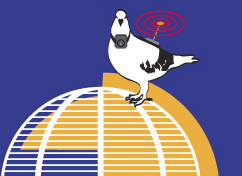Enabling Perception and Interactivity in Art Works Tickets: $25
When: Monday, Aug. 7, 9:30 AM – 5 PM
Where: Parkside Hall, 180 W San Carlos St., San Jose
Presenter: Andrew Senior Participants are strongly encouraged to bring laptops and a webcam to the workshop to be able to participate. Alternatively another digital video source (such as a video camera and framegrabber or video files) may be appropriate. Examples in the class will be given in the free software packages: pd with GEM and in processing with JMyron. Participants are strongly encouraged to have these packages installed on their laptops and to have used the JMyron and GEM video examples. (Download pages: pd + GEM; processing + JMyron)
The workshop presenters will use Windows PCs and do not have experience with these tools under Mac or Linux, so users of these systems are particularly urged to get their systems working with the GEM/JMyron examples in advance. This workshop on Computer Vision for artists will be based on an open, lively discussion of topics centered around three themes: (1) introduction to vision (basic techniques, state of the art, etc.); (2) history and theory (e.g., vision and interaction, discussion of artworks that use vision, cultural aspects of vision, etc.); and (3) practical issues (e.g., tools available, limitations, etc.). Participants will be divided into groups and asked to discuss and present their ideas on topics such as community vision, surveillance & inverse surveillance, vision & architecture, vision, the self, and others, audience participation, museum experiences, interactive spaces, mobile vision, and so on. Audience The workshop is intended for people who wish to explore technical, theoretical, and practical considerations of using computer vision in the arts. Format The workshop will consist of brief presentations by the workshop organizers, as well as group, and general discussions. The first part of the workshop will mainly cover basic concepts and techniques. The second part of the workshop will focus on the history of computer vision in the arts, and on theoretical aspects. The third part of the workshop will focus on practical considerations and participant presentations. Participants will be able to ask questions throughout the workshop. In order to encourage dialogue, however, participants will be asked to form groups from the start and each group will be asked to discuss the work of one or two artists who use computer vision, and to select an interaction task (however small) to implement by the end of the workshop. We expect the groups to include participants with different levels of experience, and for the more experienced participants to help their groups achieve the proposed task. In cases where an actual implementation is not possible, groups will be asked to present their ideas for discussion. The groups will be given the option to choose any project, but discussions on the following topics will be strongly encouraged: - Community vision
- Surveillance & inverse surveillance
- Vision & architecture
- Vision, the self, and others
- Audience participation
- Museum experiences
- Interactive spaces
- Mobile vision
Outline PART I: Introduction to Vision This part is mainly presented by the workshop organizers. A. Basic Concepts
- What is vision?
- physics / human vision: light, lenses
- What is computer vision?
- How does it relate to photography?
- Basic physical structure, RGB arrays, resolution, colour spaces
- Digital and analog cameras, framegrabbers, DV
- Other wavelengths... (e.g., infrared, different types of vision sensors)?
B. Low-level image processing and vision: basic techniques
- Information extraction: detection, measurement: representations
- Basic image processing (thresholding, connected components, frame differencing?)
- Background subtraction, motion detection and tracking
- Face detection
- Electronic mirrors
- Camera-projector systems: what is camera calibration?
- Robustness
C. State-of-the-art: where vision is and where it is going Run down of research topics that might be of (future) interest for artists:
- Human pose capture, gesture recognition
- Face recognition/analysis/lipreading
- 3D shape capture
- Image or video understanding and indexing
- Multimodal interaction
- Surveillance
PART II: History and theoretical discussion This part is presented by the workshop organizers and includes group discussions and presentations. - Where has vision been used in art?
- Specific artists and works
- What does vision bring to art?
- Cultural aspects of vision
- Other theoretical issues: surveillance and privacy, human perception, identity and self-image
Part III: Practical issues and discussion In this part of the workshop, the organizers will give a quick overview of some of the major tools available for vision. Groups will be asked to present their ideas based on the topics discussed above (community vision, surveillance, architecture, etc.) |
